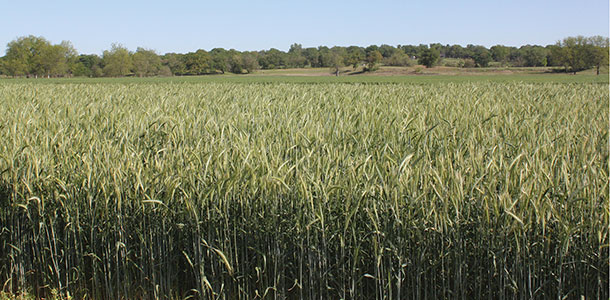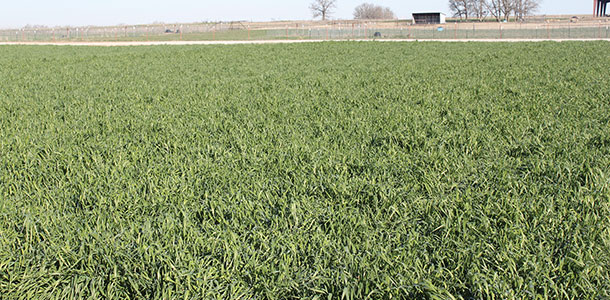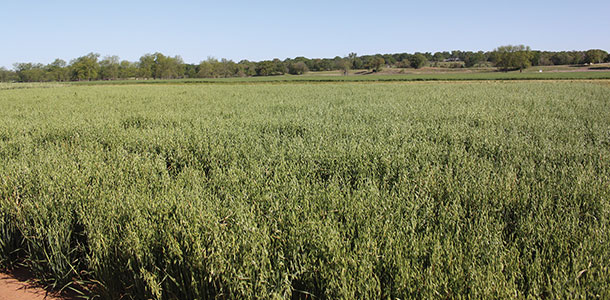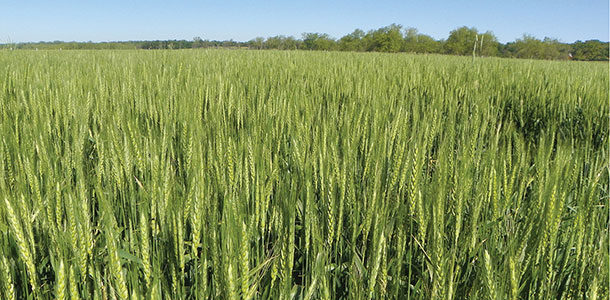The company’s small grains breeding program focuses on creating dual-purpose varieties with improved forage qualities – better fall production, the ability to recover after grazing and better overall forage yields to benefit livestock production in the southern Great Plains and southeastern U.S.
This ongoing work has produced four new small grains varieties over the past few years. These varieties will now be commercialized by Oklahoma Genetics Inc.
Wheat NF101
NF101 is the first wheat variety developed at the Noble Foundation for high fall and winter yield suitable for sustainable forage production and better grain production.
This variety produced the greatest fall-winter forage yield when compared to other varieties during seven years of testing. It is well adapted to southern Oklahoma, northern Texas and the southeastern U.S.

Triticale NF201
NF201 triticale is an alternative small grains forage for producers. It is best adapted to the areas of southern Oklahoma and northern Texas. It is more productive on marginal lands and requires less management under stressful conditions compared to wheat, according to Mike Trammell, Noble Foundation plant breeder.

Maton II Rye (NF306)
Maton II (NF306) is intended for use in fall through winter grazing systems and builds upon the company’s previous release, Maton. This variety produces more total forage when compared to the commonly grown rye varieties in southern Oklahoma, with more than half of its total yield produced during the early growing season. It is suited for light-textured and sandy loam soils, and is well adapted to southern Oklahoma, northern and eastern Texas, and the southeastern U.S.

Oat NF402
NF402 is a winter-type forage oat intended for pasture and forage production. In seven years of testing, it produced more total forage than most commonly grown oat varieties, with nearly half of the production occurring during the fall and winter.
This oat variety was selected and released based on superior forage production, especially in the fall and winter, compared to standard oat cultivars. “The early fall-winter forage production of this oat is particularly valuable, allowing producers better flexibility for earlier grazing or increased stockpiling,” Trammell said. FG
—From The Samuel Roberts Noble Foundation news release
PHOTOS
PHOTO 1: Wheat NF101.
PHOTO 2: Triticale NF201.
PHOTO 3: Maton II Rye (NF306).
PHOTO 4: Oat NF402. Photos provided by The Samuel Roberts Noble Foundation.











